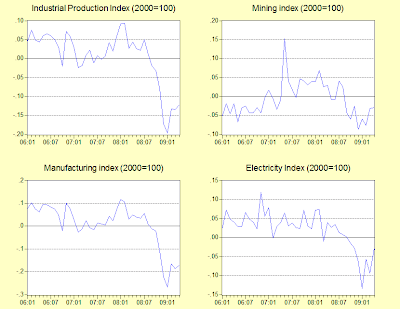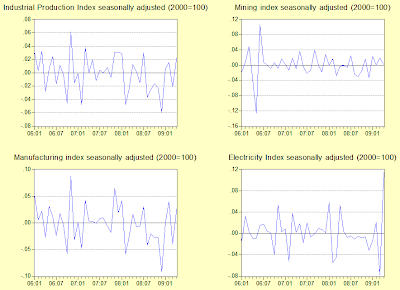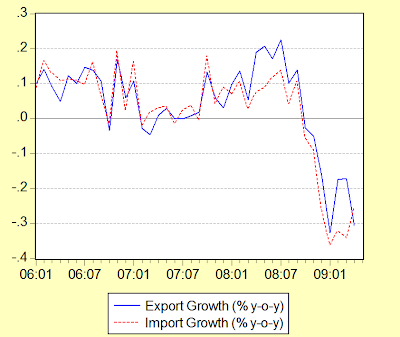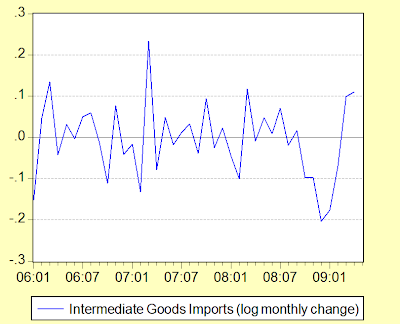Part of the problem is that while there are only three main categories of regime – fixed, floating, and intermediate – there are a large number of variations that could with justice be called categories of their own. A second issue that makes this topic difficult to cover is the difference between de jure and de facto regimes: as much as half the currencies in the world follow exchange rate regimes at odds with what they officially report. The IMF thus tracks 13 (!) different regime categories, with currency categories defined not by their reported regime but rather by the actual behavior of their exchange rates:

The choice of regime is not a cut and dried matter – what works for one country may not work for another. Also, what works at one point in time might not be an appropriate regime down the road. Some of the influences include the size of the country involved, its openness to trade and the relative size of the tradable sector, the structure of its trade (few or many trade partners), colonial ties, capital account openness, depth and breadth of the domestic money market etc. etc. etc.
Generally speaking, the larger and more developed a country and the deeper its financial markets, the more desirable it is to have a floating exchange rate regime. Which suggests the opposite is true – the smaller and less-developed a country, the more likely a fixed regime is the better choice, especially if trade is dominated by one counter-party and the capital account is relatively closed. These are gross generalizations, and there’s plenty of literature available for those who want to dig deeper.
The main criterion of regime choice is fairly clear though, at least for those countries integrated into the international financial system – it’s a choice between control over domestic monetary conditions or external prices. An exchange rate regime biased towards being fixed implies less control over interest rates and the money supply, and by extension domestic inflation and growth. A fixed exchange rate regime means a country can be at the mercy of policy decisions in the reserve currency country, which may be at odds with local monetary conditions. Conversely, a regime biased toward floating implies less control over the external price of tradables, which is important for commodity producers or small open economies, as well as suffer greater volatility in the exchange rate.
A regime choice in the middle therefore sometimes seems attractive – allowing for some degree of control over domestic monetary conditions, while also exercising some control over external prices. In practice however a intermediate regime is the worst possible choice as it means a constant balancing act between policy objectives: you can’t have your cake and eat it too. Under most circumstances, a soft peg regime combined with capital account liberalization has typically led to a financial crisis in developing countries – just as happened in East Asia in 1997-98 and in Mexico before that, and even in the European Exchange Rate Mechanism (ERM: the precursor to Euro monetary union). How so? Two main reasons why – divergent macro-policies, and capital flows.
The almost-collapse in the ERM is an interesting case, more so since it involved advanced economies. The currencies in the ERM were on fixed parity with the Deutschmark, with a small trading band to account for fluctuations. This was fine when all the countries had similar macro conditions and inflation rates. Then something momentous occurred – the Berlin wall came down, and Germany emerged as one nation. The reconstruction and integration effort required a massive dose of fiscal spending, which in turn ignited inflation. In response the BundesBank hiked interest rates, which of course meant that the DEM appreciated, and dragged the rest of the currencies in the ERM with it.
But some of the other ERM countries were already in the midst of an economic slowdown (particularly the UK), and needed lower not higher interest rates. This inconsistency in monetary policies meant that forex traders everywhere sold ERM currencies and bought DMK (with the notable and unfortunate exception of BNM), putting even more pressure on the ERM parities. This was a sure-fire, one-way bet – if the ERM held, then traders gained on the interest differential. If it didn’t, then massive profits could be made in the devalued currencies, which in fact occurred when GBP, NOK, SEK eventually pulled out of the ERM.
The East Asian case is different, but with similar results. The proximate causes was a secular inflow of portfolio and direct investment, and less well-known, a sharp devaluation of the Renminbi. This had two effects: on the one hand, the inflow of capital expanded domestic money supply while keeping exchange rates elevated, and on the other trade competitiveness was lost. Central banks were unable to fully sterilise the incoming money*, and banks responded by going on a lending spree. The resulting investment boom fed on itself, triggering current account deficits and incipient inflation, which necessitated raising interest rates and boosting exchange rates further. This in turn of course attracted even more capital, which resulted in economies overheating.
*BNM basically gave up in late 1995, coincidentally the same month Anwar Ibrahim became Finance Minister.
This is the point where inconsistency between pegged exchange rates and macro-conditions created a financial crisis. Higher inflation and current account deficits suggested these currencies needed to depreciate. The fact that returns on investment were also getting poorer also helped foster a lower valuation of these currencies, at odds with prevailing exchange rates. Much as in the case of the ERM, speculators were faced with a one-way, no-lose bet with predictable results.
Based on these experiences, bipolar solutions appear to be the best choices – at the very least hard pegs for developing countries, or at least managed floats for higher income countries. But many countries continue to run intermediate regimes with some success, primarily I think because their capital accounts are much less open.
This is really not option available to Malaysia with our degree of exposure to global trade and our aspirations for creating an international centre for Islamic banking. The current regime choice is appropriate in my view, especially since the policy instrument of choice is now short-term interbank rates. The financial sector is far deeper now than it was pre-1997, with better developed capital markets and the capacity to absorb larger capital flows.
Evolution of MYR Exchange Rate Regimes
| Period | Regime category | Remarks |
| Independence to 1972 | Currency Board | Parity to GBP. Also 1967-1973 one-to-one convertibility with Singapore Dollar (SGD) and Brunei Dollar (BND). 1967 also saw the Ringgit Malaysia replace the Malayan Dollar |
| 1973-1975 | Crawling Peg | Parity shifted to USD, with an intervention band of 4.5% |
| 1975-1990 | Crawling Peg | Parity to a basket of currencies. Umezaki (2006) characterizes the 1975-1985 period as one of a de facto peg against the SGD, and against the USD thereafter |
| 1991-1997 | Managed Float | Intervention increased in 1995-1996, changing the classification slightly to a tightly managed float |
| 1998-2005 | Fixed Peg | Parity to the USD |
| 2005 onwards | Managed Float |
Technical Note:
The chart of IMF de facto exchange rate regime categories comes from ”The Evolution of Exchange Rate Regimes Since 1990: Evidence From De Facto Policies”, Bubula, Andrea & Ötker, Inci, International Monetary Fund Working Paper 02/155 (2002), pg14. An explanation of the regime categories can also be found in the same paper on pg 15. The latest classification of regime categories of IMF members can be found here.
The table on the evolution of Malaysia’s exchange rate regime comes from a variety of references. From 1990-2008, the sources are the IMF references quoted above.
Information for prior years comes from:
1. Umezaki, S., 2006. “Monetary and Exchange Rate Policy in Malaysia Before the Asian Crisis”, Discussion Paper No 79, Institute of Developing Economies (2006); and
2. “Wang dan Urusan Bank di Malaysia: Edisi Ulang Tahun ke-35 1959-1994”, Bank Negara Malaysia, (1994)



























